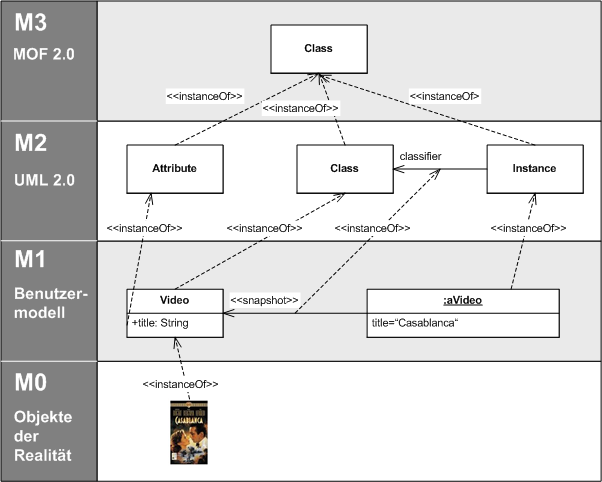Enterprise Architecture Repository and Model Exchange
Jump to navigation
Jump to search
<slideshow style="nobleprog" headingmark="。" incmark="…" scaled="false" font="Trebuchet MS" >
- title
- Enterprise Architecture Repository and Model Exchange
- author
- Bernard Szlachta (bs@NobleProg.co.uk)
</slideshow>
Meta Modelling。
Meta-Object Facility (OMG MOF)。
- Originated in UML
- Designed as a four-layered architecture
- It provides a meta-meta model (M3 layer)
- M3-model is the language used by MOF to build metamodels (M2-models, e.g. UML meta-model)
- MOF metamodels are usually modeled as UML class diagrams
- A supporting standard of MOF is XMI (XML-based exchange format for M3,M2 and M1 models)
Common Warehouse Metamodel (OMG CWM) 。
- "Defines a specification for modeling metadata for relational, non-relational, multi-dimensional, and most other objects found in a data warehousing environment"
- Based on UML, MOF, XMI
- Tools can be CWM compliant
- Oracle, Pentaho, IBM support CWM
Since every data management and analysis tool requires different metadata and a different metadata model (known as a metamodel) to solve the data warehouse metadata problem, it is simply not possible to have a single metadata repository that implements a single metamodel for all the metadata in an organization. Instead, what is needed is a standard for interchange of warehouse metadata. From spec http://www.omg.org/spec/CWM/
XMI。
- The XML Metadata Interchange (XMI)
- Standard for exchanging metadata information via Extensible Markup Language (XML).
- Metadata whose metamodel must be expressed in MOF.
- Usually used for UML, SysML and other MOF compliant languages
- XMI does not exchange the diagram itself (see UMLDI, BPMN 2.0)
- XMI is an ISO standard: ISO/IEC 19503:2005 Information technology
- XMI version 2 is substantially different than XMI 1
- Each metamodel will define their own XMI format, therefore some standards use UML profile rather than their own metamodel (SoaML)

